| Quick Guide to Indian Artifacts |
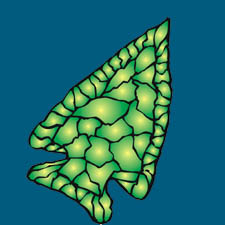
November is Native History Month
A brief picture guide to eight basic artifact types left by prehistoric Native Americans in New England. Learn the basic items and tools left by ancient New England residents.
We have much to learn about the Native Americans who lived here for at least 10,000 years before the arrival of European colonists. One way to do so is through a study of the tools and weapons they used. When you visit museums with prehistoric Indian collections, look for some of these items.
 REMEMBER: if you discover any human remains or artifacts -- DO NOT touch or move them. Archeologists get a great deal of information from where an object is located and how it is positioned. Moving the object, even slightly, can destroy valuable clues that may solve an intriguing mystery. Native American groups are interested in repatriating some artifacts and all human remains, so treat all items with respect.
REMEMBER: if you discover any human remains or artifacts -- DO NOT touch or move them. Archeologists get a great deal of information from where an object is located and how it is positioned. Moving the object, even slightly, can destroy valuable clues that may solve an intriguing mystery. Native American groups are interested in repatriating some artifacts and all human remains, so treat all items with respect.
When you find items, be sure to contact your local historical society or your state or university archeologist. Professionals will know what steps to take. Consider donating items for study. Feel free to send a digital photo of items and we will try to get them to professionals. We do not offer information on the sale of such items and cannot offer recommendations on commercial value. Our interest is strictly in gathering historic information.
TO LEARN MORE ABOUT
Gouge, axe, spearhead (row 1)
Arrow point, projectile point, plummet (row 2)
Pipe and pottery (row 3)
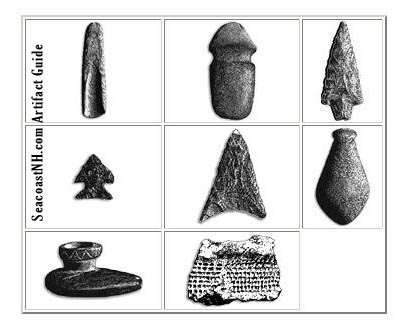
Illustrations by William Fowler courtesy of the Massachusetts Archeological Society, Inc. Artifact guide by SeacaostNH.com
Click to Continue
Indian Artifact Quick Guide
NH Indian Archaeology
Prehistoric Artifacts / First Row

Stone gouges are presumed to be woodworking tools made between 8,000 and 3,500 BP (Before Present). Along with stone adzes, they may have been used to build dugout canoes, fish weir stakes and other wooden structures.
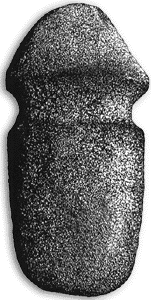
Axes like this full grooved version are another woodworking tool of the Archaic Period from around 7,000 to 3,500 years ago.
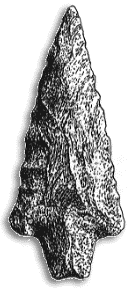
Spearheads and dart points were used before the invention of the bow and arrow. This form is called a "Neville Point," and was first identified by archeologists at the Neville site in Manchester, NH. It dates from 7,000- 8,000 years BP. (Before Present).
Illustrations by William Fowler courtesy of the Massachusetts Archeological Society, Inc..Indian Artifact Guide by SeacoastNH.com
Click to Continue
Indian Artifact Quick Guide
NH Indian Archaeology
Prehistoric Artifacts / Second Row
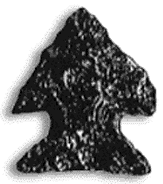
This arrow point is known as a "Jack's Reef" corner-notched point. It is common in the Middle Woodland era of coastal NH, from around 500 - 700 AD. It is distinctive because most are made from a mustard-yellow colored stone called jasper. Indians may have traded this material all the way from Pennsylvania.
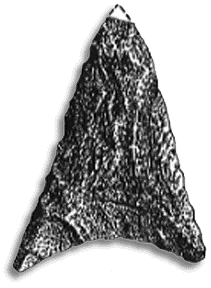
This arrow head, technically called a projectile point is of the type used throughout New England and south along eastern North America. This Levanne Triangle projectile point dates from the Late Woodland period, about 1,000- 1,500 AD.
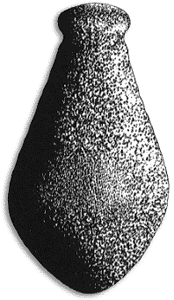
Stone plummets are thought to be the equivalent of modern day fishing weights. They were used during the Late Archaic period between 6,000 and 3,500 years ago.
Illustrations by William Fowler courtesy of the Massachusetts Archeological Society, Inc., Artifact guide by SeacoastNH.com
Click to Continue
Indian Artifact Quick Guide
NH Indian Archaeology
Prehistoric Artifacts / Third Row
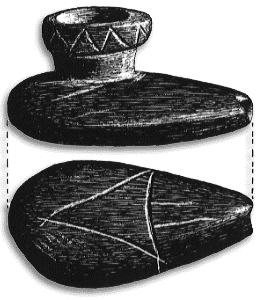
The platform pipe made of stone was commonly used throughout eastern North America. Particularly common in large burial mound sites in the Midwest, they might also be found in NH. They date from about 500 - 100 AD.
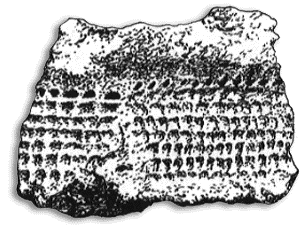
Pottery was used in NH from as far back as, perhaps, 3,000 years ago. This fragment is decorated with what is called "dentate stamp," impressions made with a comb-like tool. It is characteristic of the Middle Woodland period from 0 - 1,000 AD.
Illustrations by William Fowler courtesy of the Massachusetts Archeological Society, Inc.. Artifact guide by SeacoastNH.com.
